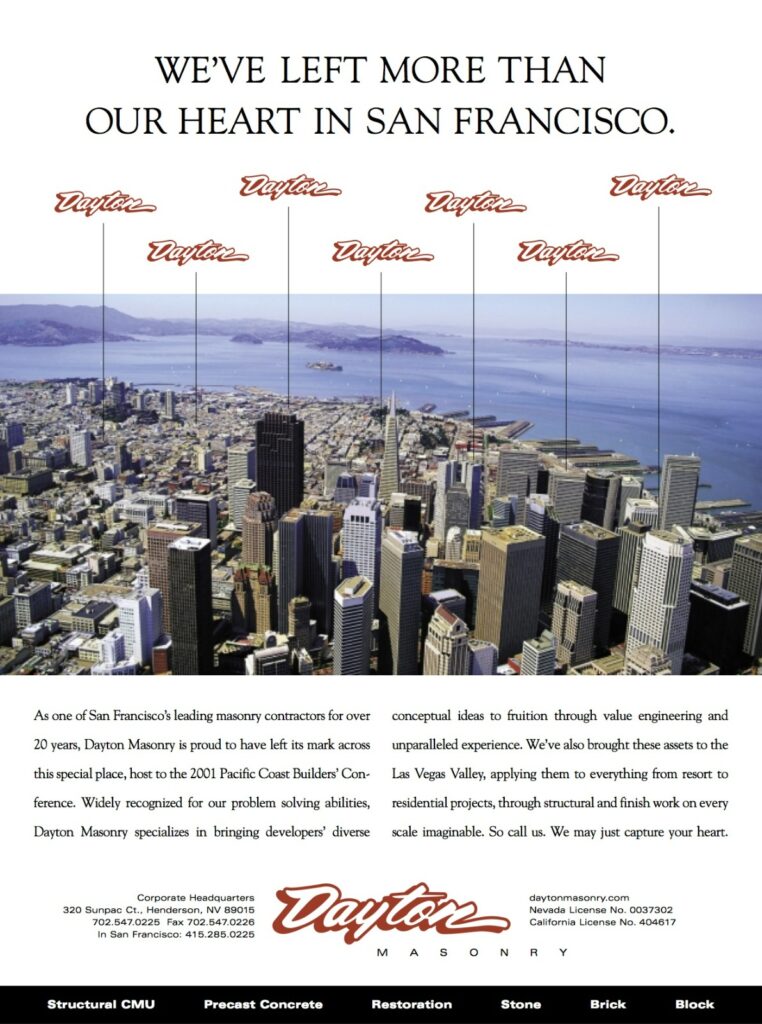Crafting Legacies: Jim Dayton Masonry
Expert Masonry Services Since 1981
Get A Free Quote:
WHO WE ARE
Locally-Owned and Operated Masonry Contractor:
Founded in 1981, Jim Dayton Masonry is a locally owned and operated masonry contractor proudly serving the communities of Midland, Odessa, and Big Spring, TX. With a strong commitment to quality craftsmanship and integrity, we have earned a reputation as a trusted name in the masonry industry.
Graduating from James Madison University in 1979, Jim Dayton brought both education and passion for masonry to his work. From the very beginning, our mission has been to deliver exceptional masonry solutions that not only meet but exceed our clients’ expectations. Over the past four decades, we have specialized in a wide range of services.
Our dedication to craftsmanship, attention to detail, and unwavering integrity have made us the preferred choice for homeowners and businesses alike. We believe in building lasting relationships with our clients, and we take pride in every project we undertake, ensuring that your satisfaction is our top priority.
At Jim Dayton Masonry, we don’t just build structures; we build trust. Let us help you bring your masonry vision to life with our expertise and commitment to excellence.

What we offer
Full-Range of Masonry, Brick & Block Services to Enhance Your Property:
OUR VALUE
Our Core Values Are Integrity, Quality, Customer Focus
Integrity
We conduct our business with honesty and transparency, ensuring that every project is handled ethically and with respect for our clients.
Quality Craftsmanship
We are dedicated to delivering top-notch craftsmanship, using the best materials and techniques to ensure lasting results.
Customer Satisfaction
Your satisfaction is our top priority. We listen to your needs, address your concerns, and work tirelessly to exceed your expectations.
WHY CHOOSE US
Proven Expertise, Quality Materials:
With a rich history in the masonry industry since 1981, we bring extensive knowledge and skill to every project.
As a local business, we understand the unique needs of our community and are dedicated to providing personalized, high-quality service.
We are BBB accredited and recognized by EVALUATE Home, reflecting our commitment to ethical practices and exceptional service.
What Our Clients Say
Client Feedback & Reviews
Excellent Job! I Highly recommend him and his team! He did the the job in a timely manner and cleaned up the site.
Let’s discuss your needs and explore how we can bring your vision to life.
COMMON QUESTIONS
Most Popular Questions
Masonry is subject to a wide variety of complex forces.
Among these are:
• Water damage due to irrigation/ sprinklers spraying
brick Expansion and contraction due to freeze/thaw cycles.
• Efflorescence (expansion of soluble salts).
• Thermal expansion and contraction.
• Expansion of rusting metal contiguous to the masonry units.
• Moisture trapped behind painted masonry unable to escape.
• Masonry “sealed” with an inappropriate sealer.
• Effects of acid rain.
• Failure to properly repair mortar joints (repointing) soon after initial mortar failure.
• Using an incorrectly formulated repair mortar for repointing.
• Failure to repoint.
• Incompatible materials with differing physical characteristics contiguous to each other.
• Imperfections in the masonry units resulting from the
fabrication or manufacturing process.
• Incorrectly installed masonry units.
• Poor detailing, design, and specifications.
• Wind erosion.
• Biological growth (plant life).
• Rising damp (the vertical migration of water through masonry by way of capillary action).
• Splashback (water falling from the roofline, hitting the ground, and splashing up on the masonry).
• Being hit by vehicles, lawnmowers, and other such things.
• Settling.
• Birds and other animals.
• Seismic activity.
• Several of these forces often work simultaneously on
the masonry. The best way to identify the causes of deterioration is to call on the expertise of an experienced and trained professional who has a keen understanding of masonry materials science. Only after the cause has been determined can the most appropriate and enduring intervention method be recommended.
The cause and extent of the deterioration, as well as the
environmental conditions the
masonry is exposed to, determine the best way to repair masonry.
Among the repair options are:
• Composite Patching Replacing the areas of deterioration with a specially formulated repair mortar that closely matches the color, texture, and physical characteristics of the host masonry.
• Dutchman Patches – Replacing small areas of
deterioration with new masonry that is carefully shaped to precisely fit the void created as a result of removing the deteriorated portion of the masonry. Dutchman patches are usually done on stone rather than brick or terra-cotta.
• Remove and Replace – Removing the entire masonry unit, then replacing it with new masonry.
• New Veneer – Removing the entire exposed face of the masonry to a predetermined depth, then replacing it with new masonry.
• Retooling – Reshaping the masonry unit where it sits
without removing any part of it.
• Consolidation – Carefully removing the badly
deteriorated masonry material, then applying various specialty treatments that strengthen and consolidate the remaining masonry unit. The masonry is not restored, but rather preserved in its existing condition.
Choosing the best method to repair deteriorated masonry is a critical decision that should be done by a trained, experienced, and competent professional. This will give you peace of mind that the repaired masonry will not only look good, but it will also endure the test of time.

